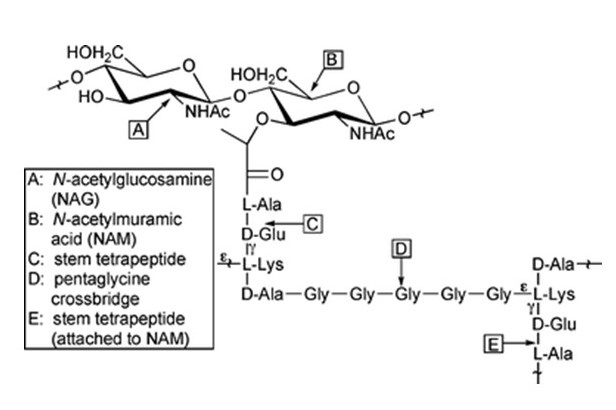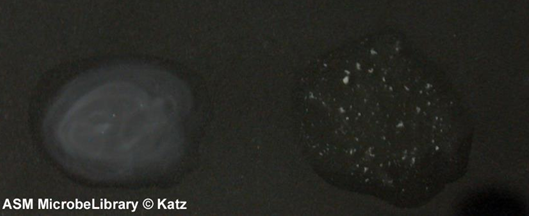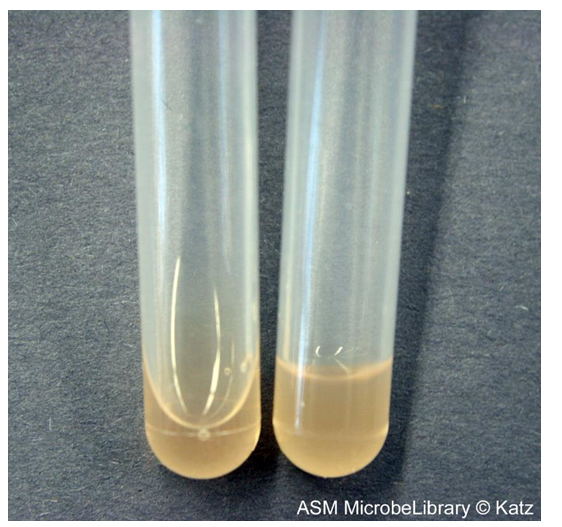34 Biochemical assays: lysostaphin and coagulase
34.1 Biochemical assays used for the identification of staphylococci
There are a number of different biochemical assays that are useful in the identification of staphylococci such as S. aureus, including DNAse tests, and the lysostaphin and coagulase tests covered here. (Biomerieux, the company that makes the API-20E tests you used in the previous laboratory, also makes API strips that can be used for the identification of staphylococci, the API-Staph and ID 32 Staph kits.)
We will not be performing the lysostaphin test in the lab because of the relatively long incubation time, but this test has been performed for you and your unknowns have been confirmed as lysostaphin sensitive.
You will be performing the slide coagulase test on your isolates, but the tube coagulase test is also described here.
34.1.1 Lysostaphin assay
A diagnostic characteristic of staphylococci is their sensitivity to lysostaphin, an enzyme that cleaves the pentaglycine bridge present in the peptidoglycan cell wall of these microorganisms (Figure 34.1). (Other Gram-positive bacteria like Micrococcus sp. lack this pentaglycine bridge and are therefore resistant to lysostaphin.)

Protocol: Lysostaphin sensitivity test
Use a sterilised inoculating loop to transfer an isolated colony from agar plate to a tube containing 0.2 ml phosphate-saline buffer, and emulsify the colony in the buffer until the cells are well-suspended.
Transfer half of the suspended cells to another tube and mix with 0.1 ml phosphate-saline buffer (this will be your control reaction).
Add 0.1 ml lysostaphin (dissolved in 0.02 M phosphate-saline buffer containing 1% NaCl) to original tube for concentration of 25 µg lysostaphin/ml.
Incubate both tubes at 37°C for two hours.
Interpretation
A positive reaction is detected by clearing of bacterial turbidity (cell lysis). The test is considered negative if clearing has not occurred after 2 hours.
34.1.2 Coagulase assay
Coagulase is an enzyme that has prothrombin-like activity and is capable of converting plasma fibrinogen to fibrin with resultant clot formation.
Coagulase can be present in two forms, “free” and “bound” each having different properties and requiring different testing procedures.
In this laboratory we will use the more rapid test for bound coagulase, the so-called slide test (Figure 34.2)

As not all strains of Staphylococcus aureus express bound coagulase a negative test result requires the free coagulase (tube) test to be performed for absolute confirmation (Figure 34.3).
